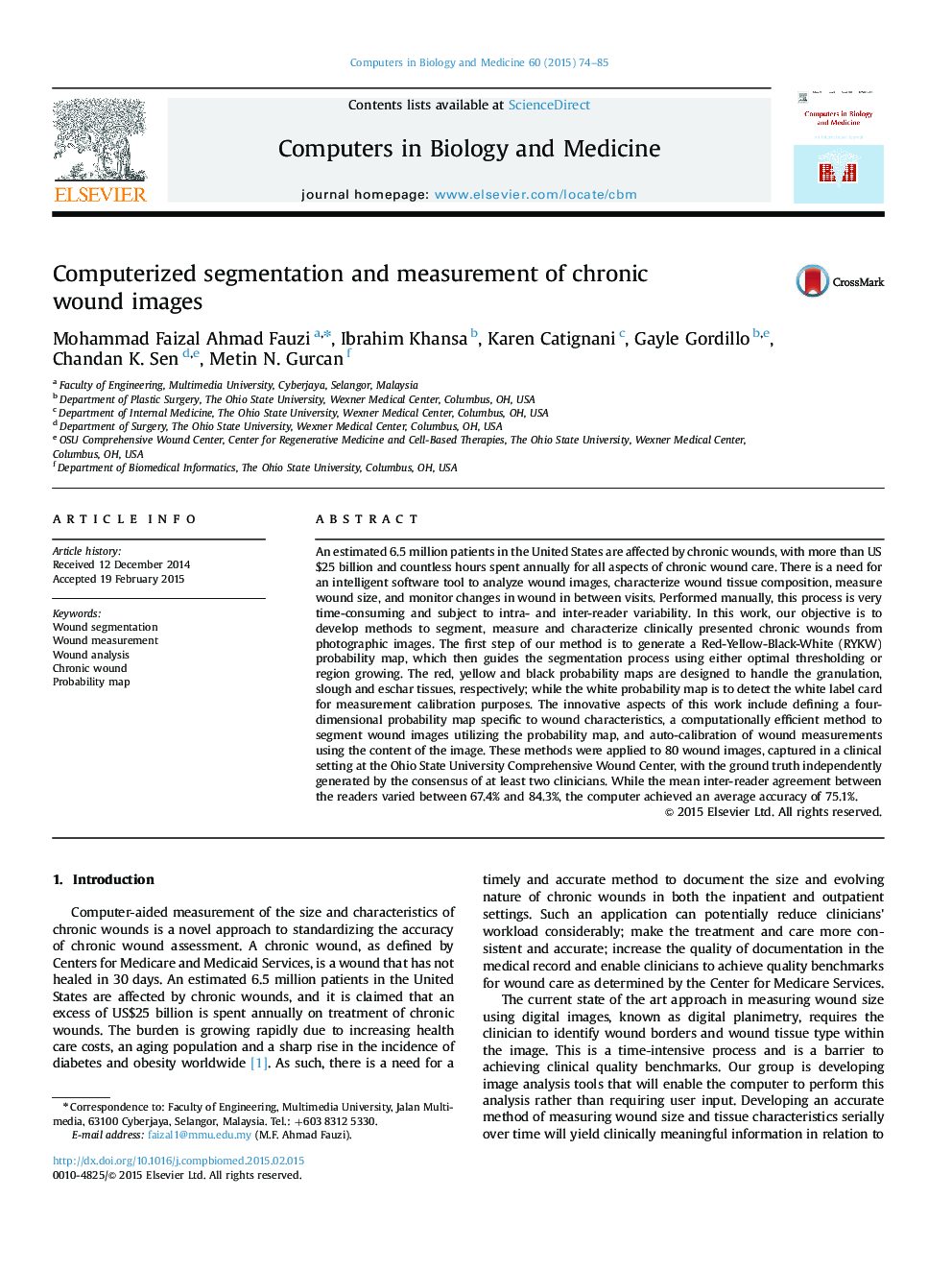| Article ID | Journal | Published Year | Pages | File Type |
|---|---|---|---|---|
| 504928 | Computers in Biology and Medicine | 2015 | 12 Pages |
•We proposed a method to segment chronic wounds based on 4D probability map.•The algorithm characterizes wounds into granulation, slough and eschar tissues.•Experiment on 80 wound images gives an average accuracy of 75.1%.•We also analyze the agreement between experts on wound and tissue boundaries.•For wound boundary, mean agreement between experts is between 67.4% and 84.3%.
An estimated 6.5 million patients in the United States are affected by chronic wounds, with more than US$25 billion and countless hours spent annually for all aspects of chronic wound care. There is a need for an intelligent software tool to analyze wound images, characterize wound tissue composition, measure wound size, and monitor changes in wound in between visits. Performed manually, this process is very time-consuming and subject to intra- and inter-reader variability. In this work, our objective is to develop methods to segment, measure and characterize clinically presented chronic wounds from photographic images. The first step of our method is to generate a Red-Yellow-Black-White (RYKW) probability map, which then guides the segmentation process using either optimal thresholding or region growing. The red, yellow and black probability maps are designed to handle the granulation, slough and eschar tissues, respectively; while the white probability map is to detect the white label card for measurement calibration purposes. The innovative aspects of this work include defining a four-dimensional probability map specific to wound characteristics, a computationally efficient method to segment wound images utilizing the probability map, and auto-calibration of wound measurements using the content of the image. These methods were applied to 80 wound images, captured in a clinical setting at the Ohio State University Comprehensive Wound Center, with the ground truth independently generated by the consensus of at least two clinicians. While the mean inter-reader agreement between the readers varied between 67.4% and 84.3%, the computer achieved an average accuracy of 75.1%.
